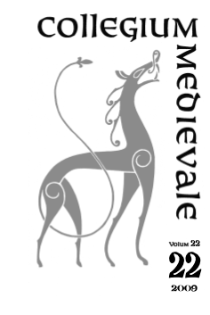Sammendrag
Der liebe Gott ist im Detail. In the early sixteenth century the king started claiming a share of all fines and accordingly his regional governors had to include these in their accounts, giving sufficient information about each crime so that the king's- auditors could check that the king had got what he should have. The first accounts of this kind, those from Jørgen Hanssøn's period as governor in Western Norway, 1516-23, are not sufficiently well kept for our purposes, but those from Sir Mogens Gyldenstjerne's governorship in Eastern Norway 1528-29 (NRJ IV) are, and so are later accounts from the mid-sixteenth century (NLR). Each entry has the amount paid as fine, the payer, and a brief description of the crime such as "Harald in Kvitnes for one blow with a stick 0.5 daler" or "Staffen in Vike for concubinage 1 daler". As cases like the latter still, after the Reformation, were registered separately as pertaining to the Church we can thus also reconstruct the pre-Reformation state of affairs.The approximately 2,500 cases in the accounts could then be registered one by one using the statistics programme Systat, and at first sorted into about 100 sub-sub-categories. These were then sorted into a lesser number of sub-categories, and finally ended up in the following main categories: Crimes against king, society or justice, Crimes against the church, Sexual crimes, Crimes of violence, Defamation and false accusation, and Crimes against property. These categories were chosen to be comparable with those used by Statistisk sentralbyrå, but given dark numbers, probably higher in our own age than then, I decided not to use them for this purpose, except for writing an article about homicides. We now know for the first time what the medieval criminal law really was. Hoping to remedy historians' neglect of the history of justice, and also of modern, American-style social science, I have tried to give as much detailed knowledge of these crimes and their treatment by the several hundreds of local courts. In spite of the many courts only a few regional differences were conspicuous, otherwise the justice seems quite homogeneous, probably due to the ease of voyaging along the Norwegian coast.In the longer view there would be considerable value in having similar studies of other countries and other periods. As yet I do not have more than impressions to go by, but some are quite striking. Most important is the way the justice of this earlier age looked after the interests of the victim, who is more or less ignored in our time. By being almost only compensation and fine the justice of that age also appears more humane than that of many countries in our time, for instance in making the seducer of a virgin pay one half of the compensation for a homicide as well as a pretty high fine (while the girl's father may have chastised her within the limits of the law, i.e. no serious injury). Likewise I doubt that many countries treated crimes against king or church as lightly as these courts did. Whether the fines had such preventive effect as physical punishment may, however, be doubted - when homicides in the late eighteenth century had fallen to about five percent of the sixteenth century rates, this can most plausibly be ascribed to the consistent decapitation punishment here.
Forfattere beholder opphavsretten og gir tidsskriftet rett til første publisering av arbeidet. En Creative Commons-lisens (CC BY-SA 4.0) gir samtidig andre rett til å dele arbeidet med henvisning til arbeidets forfatter og at det først ble publisert i dette tidsskriftet.

